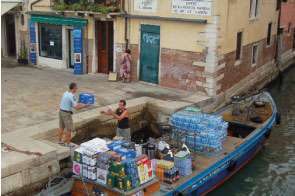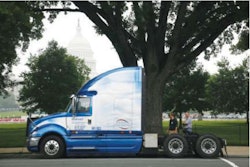
Inner- and inter-city rail is everywhere there. We Americans, by contrast, drive when we want to, where we want to. In our large cities that have a subway, it’s still the system of last resort for many who would rather endure mind-frying gridlock behind the wheel than rub shoulders with the masses. That’s even when a subway commute would include the chance to relax, read, not worry about a parking place and perhaps forgo the ownership costs of one car.
If, say, 20 percent of our inter-city and daily commuter car traffic were handled by trains, what a burden it would take off our crumbling, choked roads. A little relief would certainly help trucking, which has no choice but to use highways.
Ditto those points for bicycles. European bikers are men and women, young and old, riding day and night, often in heavy traffic. An American who’d prefer to pedal to work likely lives in a city whose roads and four-wheelers are anything but bike-friendly. He’d be safer hang-gliding in a thunderstorm.
The European mindset on transportation also reflects a broader approach to energy. It’s not uncommon for their hotels to have timer switches on hall lights. The European Union has double the windpower capacity of the United States. And compared to the tiny cars abroad, we here are driving tanks.
Freight, though, cannot move by small car or bike. Even if rail were more extensive here, only so much freight could cost-effectively switch to rail, given its limited points of access. I was reminded of that restriction while visiting Venice, where the train stops at the edge of town and the canal network rules out trucks and cars. What’s far more plentiful than tourist-toting gondolas are small boats, like waterborne trucks, delivering everything from food to lumber.
Unlike the automotive sector, trucking can’t do much to reduce the number of vehicles put on the road and their size. When it comes to energy, trucking industry leaders, as well as owner-operators, have achieved big gains in efficiency. And the industry continues to push further, as John Baxter’s cover story on hybrid development on Page 22 shows.











